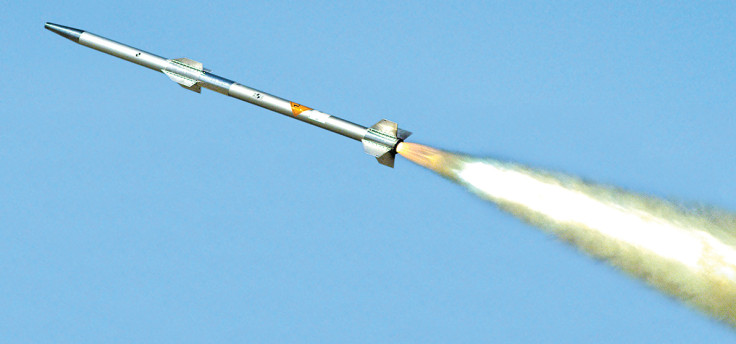US Navy reviving ramjet missile technology using cheaper model rocket parts
US Navy engineers are using affordable off-the-shelf equipment for a solid fuel air-launched ramjet.

The US Navy has decided to revisit decades-old ramjet engine technology and has succeeded in building a working rocket engine out of affordable model rocket parts.
Engineers at the Naval Air Warfare Center Weapons Division (NAWCWD) in China Lake, California, were challenged to build, design and fly a ramjet missile engine in just six months – what seemed to be an impossible demand, considering that it can take up to two decades to build a new fighter jet.
However, the team succeeded because they made use of model rocket parts that were all easily available and so cheap that the parts could be paid for using a credit card. This is a far cry from the proprietary components that usually need to be painstakingly developed over time.
Reviving the ramjet
The theory surrounding ramjet engines was first developed in France, Hungary, the Soviet Union and Germany in the early 1900s. In a regular rocket engine, at least 90% of the propellant has to be oxidiser.
Instead, ramjets work by taking in oxygen from the atmosphere and mixing it in a combustion chamber with fuel, which produces thrust. If you don't have to carry an oxygen tank, then the ramjet is lighter, meaning it can maintain high speeds during flight, flying at speeds of up to Mach 3 (three times the speed of sound, also known as "supersonic").
The consistent high speeds make it harder for adversaries to shoot the missile down, compared to a regular rocket engine, which makes a powerful launch and then rapidly slows down as it exhausts its fuel shortly after launch.
Ramjets can fly three times further than regular rocket motors can, but the problem is that you can't launch a ramjet from a stationery position the way you would do with a rockets, which is why ramjets have never really taken off.
Because the ramjet only works when it is receiving enough air, the only way to get a ramjet to work is to have a regular rocket engine booster launch it into the air, and then the ramjet engine can take over once enough air is fed into the combustion chamber.
Forget defence contractors, we'll do it ourselves
Defence contractors often take a really long time to deliver products and are keenly focused on how they can profit from the deal, so the US Navy decided to have a go at doing it by themselves.
They realised that because the ramjet missile is so small, the booster to get the missile into the air could make use of a model rocket engine, which only cost $900 (£719) and could reach speeds of up to Mach 2. This is far cheaper than the cost of starting a purpose-built factory to manufacture the rocket engines in-house.
It still took several launches before the ramjet rocket engine worked – the team admits they made some mistakes, from a timing issue with the ramjet's ignition to the booster separating from the rocket at the wrong time, but they got there in the end, and were even over a month earlier than the end-of-April deadline.
"It doesn't have to take 10 years to get something done," said Nick Quigley, an aerospace engineer on the NAWCWD's Airbreathing Propulsion Section told Naval Aviation News, the official magazine of the US Navy. "We took stuff that would come off-the-shelf, we were able to order from somebody, and then we would make that integrate into a solid-fuel ramjet. So, we made a solid-fuel ramjet out of things we could get readily available."
It will still take another three or four years before the prototype ramjet missile will be ready for deployment, but the US Navy says that this is still so much faster than what they could hope to get from a contractor.
© Copyright IBTimes 2024. All rights reserved.






